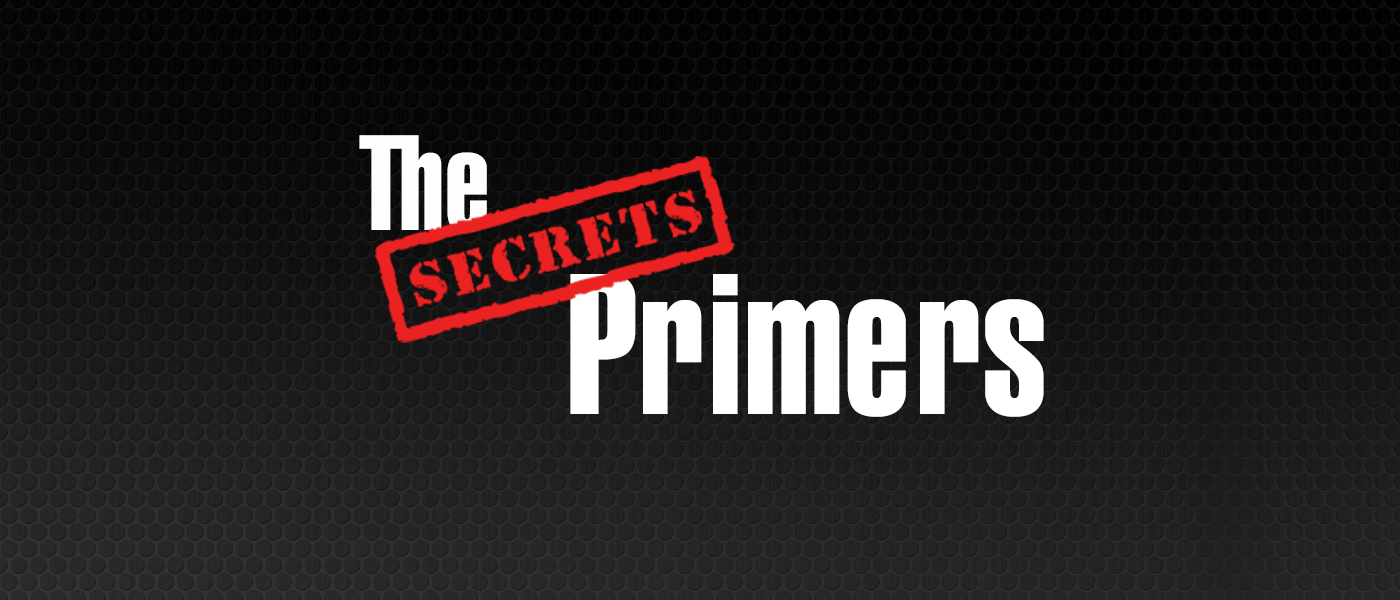Revised March 12, 2024
So Many Formats to Choose From
Let’s talk about the various surround sound formats which you will find on today’s A/V Receivers and Surround Sound Processors.
Dolby Pro Logic
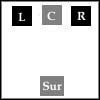 Dolby Pro Logic, like Dolby Stereo in the movie theater, converts two tracks of sound into four channels. In the days of Laserdisc and Stereo VHS it literally was the only thing going. While dated and overshadowed by newer technology, Dolby Pro Logic remains vital: It is used whenever the medium is limited to two channel and may even be used when technology permits more, in order to save space or preserve the artistry of an original audio work.
Dolby Pro Logic, like Dolby Stereo in the movie theater, converts two tracks of sound into four channels. In the days of Laserdisc and Stereo VHS it literally was the only thing going. While dated and overshadowed by newer technology, Dolby Pro Logic remains vital: It is used whenever the medium is limited to two channel and may even be used when technology permits more, in order to save space or preserve the artistry of an original audio work.
Dolby Digital
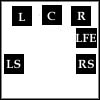 Dolby Digital (also known as the AC-3 Codec) was first made available to consumers on special Laserdiscs. It came into the mainstream when it was chosen as the multi-channel codec for the DVD Video format. It is an extremely flexible codec which can carry from 1 to 6 completely separate and independent channels of digital sound. The full six-channel configuration consists of the front left, center, front right, rear left and right, and the LFE channel (or Low Frequency Effects channel). The LFE channel has a restricted frequency range, while all the other channels are full range (8 Hz – 20 kHz), so the system is often called “5.1”.
Dolby Digital (also known as the AC-3 Codec) was first made available to consumers on special Laserdiscs. It came into the mainstream when it was chosen as the multi-channel codec for the DVD Video format. It is an extremely flexible codec which can carry from 1 to 6 completely separate and independent channels of digital sound. The full six-channel configuration consists of the front left, center, front right, rear left and right, and the LFE channel (or Low Frequency Effects channel). The LFE channel has a restricted frequency range, while all the other channels are full range (8 Hz – 20 kHz), so the system is often called “5.1”.
While two channel CD Audio has about a 1.5 mbps bitstream, Dolby Digital uses as little as 384 kbps in total for all six channels. Obviously, this requires considerable compression of the audio data (about 10:1). Dolby utilizes “Perceptual Encoding” for this process, putting only those sounds that the brain would pay attention to in the sound tracks. This necessitates very sophisticated algorithms (a series of mathematical formulas) to determine what to include and what to eliminate. In practice, the sound quality is spectacular. While initially a very expensive system for consumers, every surround sound decoder on the market now has Dolby Digital as part of the feature set.
DTS
Digital Theater Systems, or DTS, is another 5.1 digital surround sound format, first developed for movie theaters and then later appearing in homes on Laserdiscs. It is now technically an optional format for DVD. The system utilizes a completely different lossy compression codec from AC-3, and only manages a 5:1 compression. The term “Lossy” means that some of the data are lost during compression, and cannot be restored when the bitstream is decoded. This is contrasted to the term “Lossless”, which means that the compression codec (the combination of algorithms used to compress and uncompress the digital data) does not throw away any data, and the original data are restored when they are decoded.
There are some who feel that the DTS codec results in better sound because it uses less compression, but because the two codecs are different, the bitrates cannot be compared at face value (i.e., it could simply be that DTS is less efficient than AC-3 as opposed to actually sounding better). We at Secrets have never been able to definitively show that DTS sounds any better than Dolby Digital. Whereas DTS used to come at a premium price, it is now found on virtually every surround sound decoder on the market.
Dolby Pro Logic II
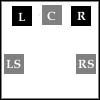 Dolby Pro Logic II is a much improved decoding system for Dolby Stereo encoded material and also caters to the decoding of non-encoded material such as regular two channel music. It differs from it predecessor by achieving a more intelligent extraction of the channels, so much so that instead of a single surround signal, Dolby Pro Logic II yields stereo left and right surrounds. For compatibility with movies and other Dolby Stereo encoded material, Pro Logic II has a Movie mode. Because non-encoded material such a music more often than not collapses to center (all the sound seems to come just from the center speaker), Pro Logic II also has a Music mode which works extremely well and can include user access to parameters to customize the sound field.
Dolby Pro Logic II is a much improved decoding system for Dolby Stereo encoded material and also caters to the decoding of non-encoded material such as regular two channel music. It differs from it predecessor by achieving a more intelligent extraction of the channels, so much so that instead of a single surround signal, Dolby Pro Logic II yields stereo left and right surrounds. For compatibility with movies and other Dolby Stereo encoded material, Pro Logic II has a Movie mode. Because non-encoded material such a music more often than not collapses to center (all the sound seems to come just from the center speaker), Pro Logic II also has a Music mode which works extremely well and can include user access to parameters to customize the sound field.
Surround EX
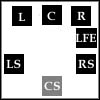 Dolby Digital Surround EX first appeared in movie theaters with Star Wars Episode I: The Phantom Menace. This system starts from a standard Dolby Digital 5.1 soundtrack but then applies a form of Pro Logic decoding to the two rear channels only, and derives a third surround channel, positioned between the other two. So from a 5.1 soundtrack, Dolby Digital Surround EX derives a 6.1 soundtrack.
Dolby Digital Surround EX first appeared in movie theaters with Star Wars Episode I: The Phantom Menace. This system starts from a standard Dolby Digital 5.1 soundtrack but then applies a form of Pro Logic decoding to the two rear channels only, and derives a third surround channel, positioned between the other two. So from a 5.1 soundtrack, Dolby Digital Surround EX derives a 6.1 soundtrack.
This new system first became available to the home market on THX equipment as THX Surround EX because THX co-created the new system. It is now available on non-THX decoders as Dolby Digital EX. Ideally, a soundtrack needs to have been crafted for this system in order for it to sound right. The surround sound information of non-EX encoded tracks can come out predominantly from the center surround channel and lose spaciousness.
DTS ES and ES Discrete
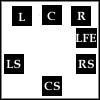 DTS also delivered some 6.1 systems. The first, DTS ES, is in all practicality the same process as Dolby Digital EX in that the playback system applies a matrix decoder to the two surround channels to derive a third between them. DTS ES Discrete on the other hand actually added a sixth discrete main channel.
DTS also delivered some 6.1 systems. The first, DTS ES, is in all practicality the same process as Dolby Digital EX in that the playback system applies a matrix decoder to the two surround channels to derive a third between them. DTS ES Discrete on the other hand actually added a sixth discrete main channel.
Whereas there are precious few Dolby Surround EX soundtracks on DVD, there are even fewer DTS ES and fewer still DTS ES Discrete. That sixth channel has just not been very successful.
Dolby Pro Logic IIx
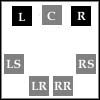 Dolby Pro Logic IIx takes virtually any source track, be it two channel or 5.1, and yields up to seven channels of sound by employing the latest in matrix decoding technology.
Dolby Pro Logic IIx takes virtually any source track, be it two channel or 5.1, and yields up to seven channels of sound by employing the latest in matrix decoding technology.
Dolby Atmos
Dolby Atmos allows for up to 118 objects that can be precisely placed anywhere in three-dimensional audio space. It includes the previously mentioned seven channels plus two “Wide” channel speakers that are to the left and right of the front main left and right channel speakers respectively, as well as three “Height” channel speakers that can be on the ceiling and above and behind the front main left and right channel speakers.
DTS:X
DTS:X is the competition for Dolby Atmos. It has a similar speaker layout and is said to have higher resolution than Dolby Atmos.
Integrated or Separates
As we’ve mentioned, Surround Sound decoders come mainly in two forms: All-in-one units with the source selection, surround processing, volume control, and the amplification (hence the term “Integrated”), and units which have all the above except the power amplifiers (hence the term “Separates”). Which is best?
You might be surprised to learn that the integrated package, the A/V Receiver or Surround Sound Receiver, with everything is the less expensive. The reason for this is that integrated systems are manufactured in very large numbers and mass marketed. The other units, the Surround Sound Processors or Preamps, are made in far fewer numbers, and the electronic quality is usually, but not always, higher.
So, you have an important choice to make. An integrated package with power amplifiers for all of the channels can be purchased for about $250 – $6,500, with most people spending between $600 and $1500. A preamplifier/surround processor, with separate power amplifiers can run $2,500 – $25,000. Although never a hard and fast rule, the dedicated surround processors are expected to have higher quality analog electronics.
Decoding chips that can decode DD and DTS in one chip became available in mid-1998, and receivers with decoding of all formats built-in are commonly available now at very low prices. What you pay for in the more expensive receivers are more ancillary features and higher power in the amplifiers.


